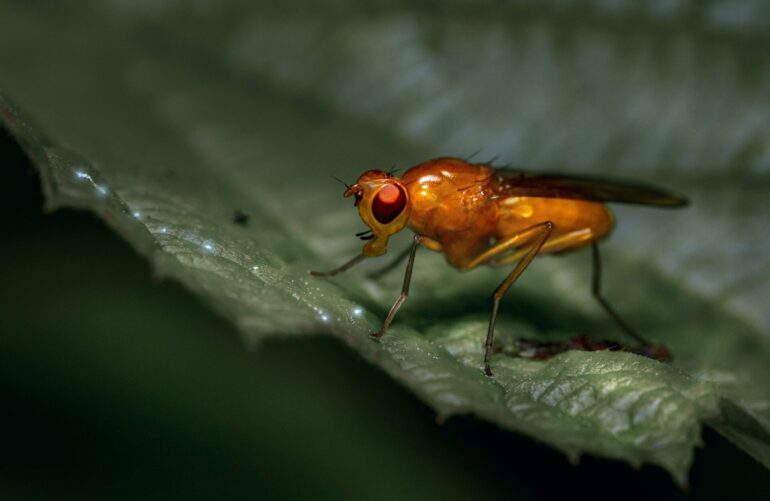Evolution takes place constantly, everywhere in nature. Nevertheless, it is always exciting for biologists to observe evolution “in real time.” One such opportunity for observation is currently being presented by the internal clock—the innate sleep-wake rhythm—of the fruit fly Drosophila melanogaster. In fruit flies, a certain variant of a “clock gene,” which presumably first appeared in southern Europe 300 to 3000 years ago, is spreading northwards, for example, to and within Scandinavia. Researchers have observed this phenomenon but have not yet been able to fully explain it. Based on laboratory studies, a team led by the neurobiologist Prof. Ralf Stanewsky from the University of Münster (Germany) is the first to offer an explanation for this phenomenon.
The study, which has now been published in the journal Nature Communications, focused on a clock gene called “timeless.”. Together with a second clock gene (“period”), it controls the circadian rhythm of the fruit fly, which lasts about 24 hours. This rhythm is permanently synchronized with the environment using external zeitgebers such as light and temperature. The researchers investigated why a special variant of the timeless clock gene, namely the ls-tim allele, has spread so rapidly.
“Like humans, Drosophila originated in sub-Saharan Africa and spread north, up to the Arctic Circle,” explains first author Angélique Lamaze. “There, the flies experience long summer days or even almost constant light, so-called white nights.” Constant lighting disrupts the function of the internal clock because it triggers the permanent degradation of the clock protein “timeless” via a molecular reaction chain. Thus, the circadian rhythm is lost.
However, temperature cycles can overcome the effects of constant illumination. The experts have demonstrated that flies with the recently evolved ls-tim allele synchronize their circadian rhythm with the ambient temperature under light and temperature conditions that mimic a Scandinavian summer day. One indicator was the insects’ level of active movement. With constant lighting and a daily temperature cycle between 16 and 25 degrees Celsius, the flies with the ls-tim allele were particularly active in the second half of the warm phase. In contrast, when there was constant lighting and temperature, there was no behavioral rhythm. Unlike the ls-tim flies, those fruit flies carrying only the original gene variant (s-tim) showed no behavioral adaptation—neither with temperature cycling nor a constant temperature.
New gene variant increases reproductive success
“From an evolutionary biology point of view, the behavioral adaptation can be well explained,” emphasizes Angélique Lamaze. “Summer is the insects’ reproductive season. Animals that are synchronized in their behavior and ready to mate at the same time of day have a better chance of meeting and reproducing. As ls-tim allows such synchronization even under extremely long summer days, this is most likely an important factor contributing to its ongoing northward spread and could explain its evolutionary success. “
The research team also proved that even a single copy of the ls-tim allele is sufficient to enable synchronization in “Scandinavian conditions,” which further supports the spreading of this allele. Like humans, for example, fruit flies possess two either identical or similar copies of each gene—one copy from each parent.
The new gene variant produces a protein that deviates slightly from the original form, which is particularly stable under illumination, and therefore, interferes with the molecular reaction cascade that otherwise triggers the degradation of the clock protein “timeless.” This, the team concluded, is a prerequisite required for the temperature cycle to restore the circadian rhythm of fruit flies under continuous illumination.
The neurobiologists used a combination of behavioral experiments as well as modern genetic and immuno-histochemical methods in their study. Among other things, they compared fly strains with different genetic make-ups, investigating their behavior during simulated Scandinavian summer nights and the activity of their clock genes in different brain neurons.
More information:
Angélique Lamaze et al, A natural timeless polymorphism allowing circadian clock synchronization in “white nights”, Nature Communications (2022). DOI: 10.1038/s41467-022-29293-6
Provided by
University of Münster
Citation:
Fruit flies adapt activity to ‘white nights’ (2022, March 31)
